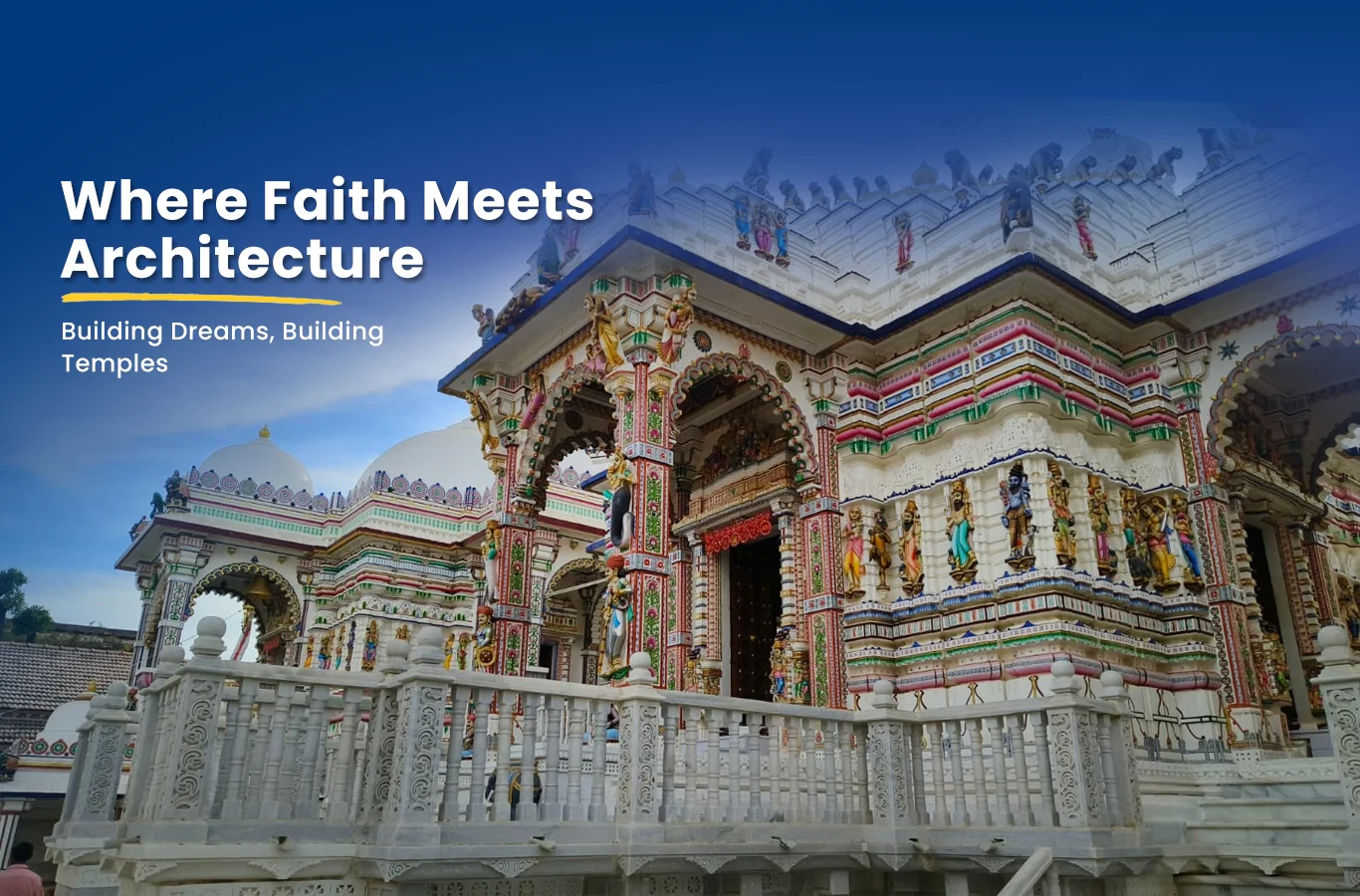Jain temples are renowned for their intricate designs, serene ambiance, and spiritual significance. Their architecture reflects a commitment to purity, symmetry, and devotion. Across India, Jain temples stand as masterpieces created by skilled artisans and architects, including the celebrated Temple Architects in India and the Jain Temple Sompura community. Additionally, Temple Construction Services in Rajasthan have played a pivotal role in preserving and enhancing these architectural marvels. This article explores the unique architectural features of Jain temples and their cultural importance.
The Philosophy Behind Jain Temple Architecture
Spiritual Ideals in Design
Jainism emphasizes simplicity, purity, and non-violence, and these values are deeply ingrained in the design of Jain temples. Every element, from the sanctum (garbhagriha) to the carvings, is created to foster spiritual reflection and harmony.
Key principles include:
- Symmetry and Balance: Representing the Jain ideals of order and discipline.
- Purity of Material: Most Jain temples use pristine white marble or sandstone, symbolizing purity and detachment.
- Minimalism: Although intricately carved, the temples avoid ostentation, reflecting simplicity.
Role of Temple Architects
Temple Architects in India, particularly the Jain Temple Sompura community, have been instrumental in translating these philosophies into architectural reality. Their expertise ensures that the temples not only adhere to traditional principles but also incorporate modern innovations when needed.
Unique Features of Jain Temples
1. Intricate Carvings
One of the most distinctive features of Jain temples is their detailed carvings. From floral patterns to depictions of Jain deities and philosophical motifs, every surface is a canvas of artistic excellence.
- Example: The Dilwara Temples in Mount Abu are celebrated for their exquisite marble carvings, with each ceiling, dome, and pillar narrating a story of devotion and skill.
- Sompura Expertise: The Jain Temple Sompura architects are renowned for their precision in carving, ensuring each detail aligns with spiritual ideals.
2. Elaborate Domes and Pillars
Jain temples often feature multiple domes and intricately designed pillars, symbolizing the infinite nature of the cosmos and the interconnectedness of all life.
- Ranakpur Jain Temple: This temple in Rajasthan is supported by 1,444 unique marble pillars, showcasing the unmatched artistry of its creators.
- Modern Enhancements: Temple Construction Services in Rajasthan often use advanced tools like CNC machines to maintain the precision of such intricate designs.
3. Symmetrical Layouts
Symmetry is central to Jain temple architecture, reflecting the orderliness of the universe and the balance required for spiritual progress. Temples are typically designed in a cruciform layout, with central sanctums surrounded by interconnected halls and corridors.
- Example: The Shatrunjaya Temples in Palitana, Gujarat, exemplify this symmetrical design, creating a harmonious and meditative environment.
4. Use of Light and Space
Jain temples are designed to maximize natural light and ventilation, creating a serene ambiance for meditation. Open courtyards, large windows, and reflective marble surfaces enhance the sense of peace.
- Dilwara Temples: The clever interplay of light on white marble creates a divine atmosphere, elevating the spiritual experience.
Contributions of Jain Temple Sompura Architects
A Legacy of Excellence
The Jain Temple Sompura architects are synonymous with Jain temple architecture. With a history dating back centuries, this community has been involved in constructing iconic Jain temples across India and abroad.
Signature Features of Sompura Architecture
- Material Mastery: Expertise in working with marble and sandstone, ensuring durability and aesthetic appeal.
- Attention to Detail: Every carving, from the smallest motif to the grandest dome, is executed with meticulous precision.
- Integration of Tradition and Innovation: While rooted in ancient principles, Sompura architects incorporate modern techniques to meet contemporary needs.
Temple Construction Services in Rajasthan: A Hub of Excellence
Rajasthan’s Role in Jain Temple Architecture
Rajasthan, with its rich architectural heritage, has been a major center for Jain temple construction. Temple Construction Services in Rajasthan are known for their ability to balance traditional craftsmanship with modern engineering.
Iconic Jain Temples in Rajasthan
- Ranakpur Jain Temple: A symbol of harmony between nature and spirituality, this temple highlights Rajasthan’s legacy in Jain architecture.
- Dilwara Temples: These temples in Mount Abu stand as a testament to the skill and vision of Temple Architect in India and local artisans.
Modern Innovations in Rajasthan
Temple construction services in the state have adopted eco-friendly practices, such as using sustainable materials, water harvesting systems, and solar energy, while preserving traditional designs.
Challenges in Preserving Jain Temple Architecture
Balancing Tradition with Modern Needs
As modern materials and techniques become prevalent, maintaining the authenticity of traditional designs poses a challenge. Architects strive to ensure that innovations complement, rather than overshadow, historical aesthetics.
Preserving Handcrafting Skills
While advanced tools aid precision, there is a growing concern about the decline of traditional hand-carving skills. Initiatives to train artisans and encourage their participation in temple projects are essential.
The Future of Jain Temple Architecture
A Harmonious Blend
The future of Jain temple architecture lies in blending timeless traditions with modern innovations. Architects like the Jain Temple Sompura community and services in Rajasthan are already leading the way, creating structures that resonate with spirituality while meeting the demands of the modern world.
Supporting Architectural Heritage
Governments, religious organizations, and private patrons must continue to support the preservation and promotion of Jain temple architecture. This includes funding for restoration projects, training programs for artisans, and awareness campaigns about the cultural significance of these temples.
Conclusion
The unique architectural features of Jain temples across India reflect a profound blend of spirituality, artistry, and engineering excellence. Whether it is the intricate carvings, symmetrical layouts, or innovative use of light and space, these structures are a testament to the dedication of Temple Architects in India and communities like the Jain Temple Sompura architects.
With the continued efforts of Temple Construction Service in Rajasthan, Jain temples will remain timeless symbols of devotion and cultural heritage, inspiring generations to come. By respecting tradition while embracing innovation, India’s Jain temples will continue to shine as beacons of spiritual and architectural brilliance.

